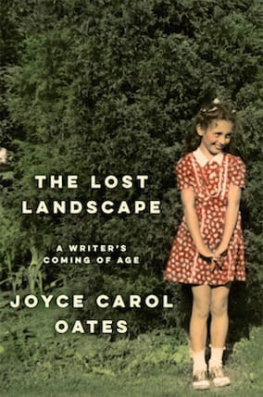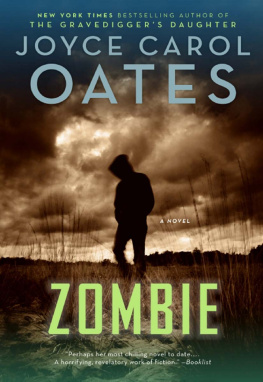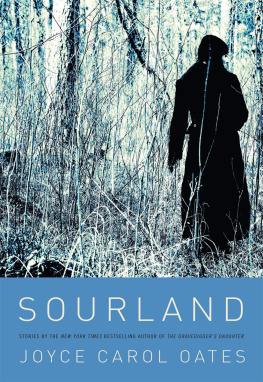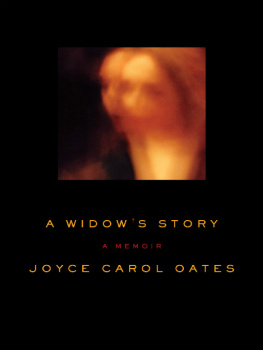
Joyce Carol Oates
Ill Take You There
A picture held us captive. And we could not get outside it, for it lay in our language and language seemed to repeat it to us inexorably.
Ludwig Wittgenstein, Philosophical Investigations
Every substance is necessarily infinite.
Spinoza, Ethics
In those days in the early Sixties we were not women yet but girls. This was, without irony, perceived as our advantage.
I am thinking of the house on a prominent hill of a hilly and wind-ravaged university campus in upstate New York in which I lived for five wretched months when I was nineteen years old, unraveling among strangers like one of my cheap orlon sweaters. I am thinking of how in this house there were forbidden areas and forbidden acts pertaining to these areas. Some had to do with the sacred rituals of Kappa Gamma Pi (these very words a sacred utterance, once you were initiated into their meaning) and some had to do with the sorority's British-born housemother, Mrs. Agnes Thayer.
They would claim that I destroyed Mrs. Thayer. Pushed her over the edge which makes me think of an actual cliff, a precipice, and Mrs. Thayer falling by some ghostly action of my flailing arms. Yet others would claim that Mrs. Thayer destroyed me.
The Kappa Gamma Pi house! The address was 91 University Place, Syracuse, New York. It was a massive cube of three floors in that long-ago architectural style known as neo-Classic; made of heavy dusky-pink-pewter limestone like ancient treasure hauled from the depths of the sea. Oh, if you could see it! If you could see it with my eyes. The looming ivy-covered facade and in the perpetual Syracuse wind the individual ivy leaves shivering and rippling like thought Insatiable questions. Why? why? why? The lofty portico and four till graceful white columns of the kind called Doric, smooth and featureless as telephone poles. The house was located at the far, northern end of University Place, a quarter-mile from Erie Hall, the granite administration building that was the oldest building on the university campus University Place itself was a wide boulevard with parkland as a median, slowly dying yet still elegant elms. Walking from the Kappa house to the university campus on the worst winter mornings was like climbing the side of a mountain, the incline was so steep in places, sidewalks icy and treacherous so you were better off trudging across the brittle grass of lawns instead. Returning, mostly downhill, was less of a physical effort but could be treacherous, too. A half-block from the northern end of University Place the earth shifted as if in a cruel whim and there was a final steep hill to be climbed, an upward-jutting spit of land, at the top of which was the stately Kappa house with, above its portico, these mysterious symbols-

The Kappa Gamma Pi house, unlike most of the local fraternity and sorority houses, had a history. It was, in fact, "historic": it hadn't been constructed for the mere utilitarian purpose of being a Greek residence, but had once been a millionaire's home, a mansion, built in 1841 (as a plaque proudly noted) by a prominent Syracuse clockworks manufacturer and deeded to the newborn local chapter of the national sorority Kappa Gamma Pi at the death of an elderly-widow alumna in 1938. Her name sacred in our memories as Kappa alums would solemnly instruct us but her name has vanished from my memory, it's only the house I recall.
Before I was initiated into Kappa Gamma Pi in the second semester of my freshman year at the university, I would often walk far out of my way to pass the house from below; I was a pledge by this time, yet not a "sister"; I drifted lovesick and yearning gazing up at the somber, ivy-covered facade, at the tall white columns in my imagination so many more than four columns, five, six, ten columns! The floating letters

filled me with wonder, awe. For I did not yet know what they meant. Will I be a Kappa? I thought. I-I!-will be a Kappa. It didn't seem possible, yet it had to be possible, for how otherwise would I continue? I was possessed by the wayward passion of one to whom passion is unknown; denied, and thwarted; if falling in love had been a game, the object of the game would have been, to me, to resist; as in chess, you might sacrifice pawns in the service of your queen; your queen was your truest self, your virgin-self, inviolable; never would you give away your queen! And so I was one whose immune system had become defenseless before the assault of a virulent micro-organism invader. My eyes, misted with emotion, purposefully failed to take in the patina of grime on the limestone walls and on the columns, or the just perceptibly rotting, mossy slates of the roof, which, iridescent when wet, in rare, blinding sunshine, were so beautiful. Nor did I see the rust-tinctured network like veins or fossil trails imprinted in the limestone by English ivy that was dying in places, had been dying for years, and was withering away. There were more than twenty Greek houses on or near University Place, and Kappa Gamma Pi was neither the largest nor the most attractive. You could argue that it was the most dour, possibly even the ugliest of the houses, but, to me, such qualities suggested aristocratic hauteur, authority. To live in such a mansion and to be an initiate, a sister of Kappa Gamma Pi, would be, I knew, to be transformed.
I wondered if, at initiation, I would be given a secret Kappa name.
I didn't believe in fairy tales or in those ridiculous romances beginning Once upon a time. A fairy tale of a kind had prevailed at my birth and during my infancy but it had been a cruel, crude fairy tale in which the newborn baby isn't blessed but cursed. Yet I believed in Kappa Gamma Pi without question. I believed that such transformations were not only possible, but common. I believed that such transformations were not only possible, but inevitable. Not I, not I exactly, but another girl with my name and face, a girl initiate-an active-would one day soon live in that house; with tremulous pride she would wear the Kappa pin, gleaming ebony with gold letters and a tiny gold chain above her left breast, where all the privileged sorority girls wore their sacred pins, in the proverbial region of the heart.
The Way In. Climbing to the house on wedges of stone that looked aged, ancient. Stone that had begun to crack, crumble; stone worn smooth by many feet, over many years. If the steps were icy or there was a wind (in all but the stale, stagnant air of summer, there was always a wind) you might take hold of the old, ornate, not entirely steady wrought iron railing. This hill, above the city-owned sidewalk, was so steep that there couldn't have been a lawn in the conventional sense, no grass to be mowed, only a craggy outcropping of granite, in the interstices of which grew dwarf shrubs and hardy ferns of the dark, bitter-green variety and Rosa rugosa in bright splotches of color; such a formidable fronting on the street was characteristic of most of the properties at the northern end of University Place, and may have assured the outsider's sense of their dignity, inaccessibility, and high worth. From the top of the steps (I'd counted them many times: eighteen) you might pause breathless to look back, to contemplate the view behind you, which was startling as a scene in an old woodcut: there was gothic dark-granite Erie Hall floating atop its hill, a higher hill than the Kappa hill, its bell gleaming (in memory, at least) in a perpetual fading yet golden-sepia, hauntingly beautiful light.
Next page












